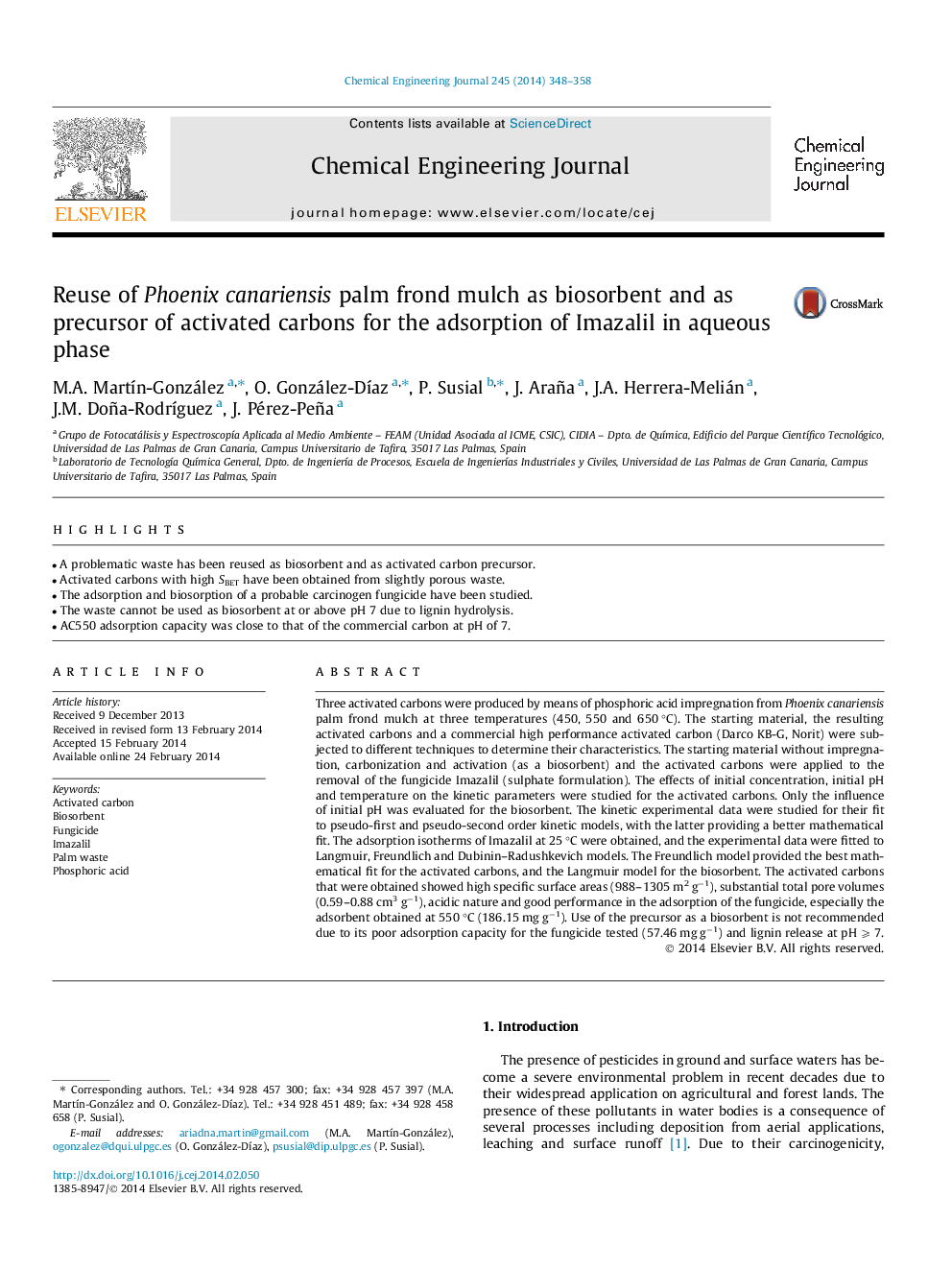| Article ID | Journal | Published Year | Pages | File Type |
|---|---|---|---|---|
| 147459 | Chemical Engineering Journal | 2014 | 11 Pages |
•A problematic waste has been reused as biosorbent and as activated carbon precursor.•Activated carbons with high SBET have been obtained from slightly porous waste.•The adsorption and biosorption of a probable carcinogen fungicide have been studied.•The waste cannot be used as biosorbent at or above pH 7 due to lignin hydrolysis.•AC550 adsorption capacity was close to that of the commercial carbon at pH of 7.
Three activated carbons were produced by means of phosphoric acid impregnation from Phoenix canariensis palm frond mulch at three temperatures (450, 550 and 650 °C). The starting material, the resulting activated carbons and a commercial high performance activated carbon (Darco KB-G, Norit) were subjected to different techniques to determine their characteristics. The starting material without impregnation, carbonization and activation (as a biosorbent) and the activated carbons were applied to the removal of the fungicide Imazalil (sulphate formulation). The effects of initial concentration, initial pH and temperature on the kinetic parameters were studied for the activated carbons. Only the influence of initial pH was evaluated for the biosorbent. The kinetic experimental data were studied for their fit to pseudo-first and pseudo-second order kinetic models, with the latter providing a better mathematical fit. The adsorption isotherms of Imazalil at 25 °C were obtained, and the experimental data were fitted to Langmuir, Freundlich and Dubinin–Radushkevich models. The Freundlich model provided the best mathematical fit for the activated carbons, and the Langmuir model for the biosorbent. The activated carbons that were obtained showed high specific surface areas (988–1305 m2 g−1), substantial total pore volumes (0.59–0.88 cm3 g−1), acidic nature and good performance in the adsorption of the fungicide, especially the adsorbent obtained at 550 °C (186.15 mg g−1). Use of the precursor as a biosorbent is not recommended due to its poor adsorption capacity for the fungicide tested (57.46 mg g−1) and lignin release at pH ⩾ 7.
